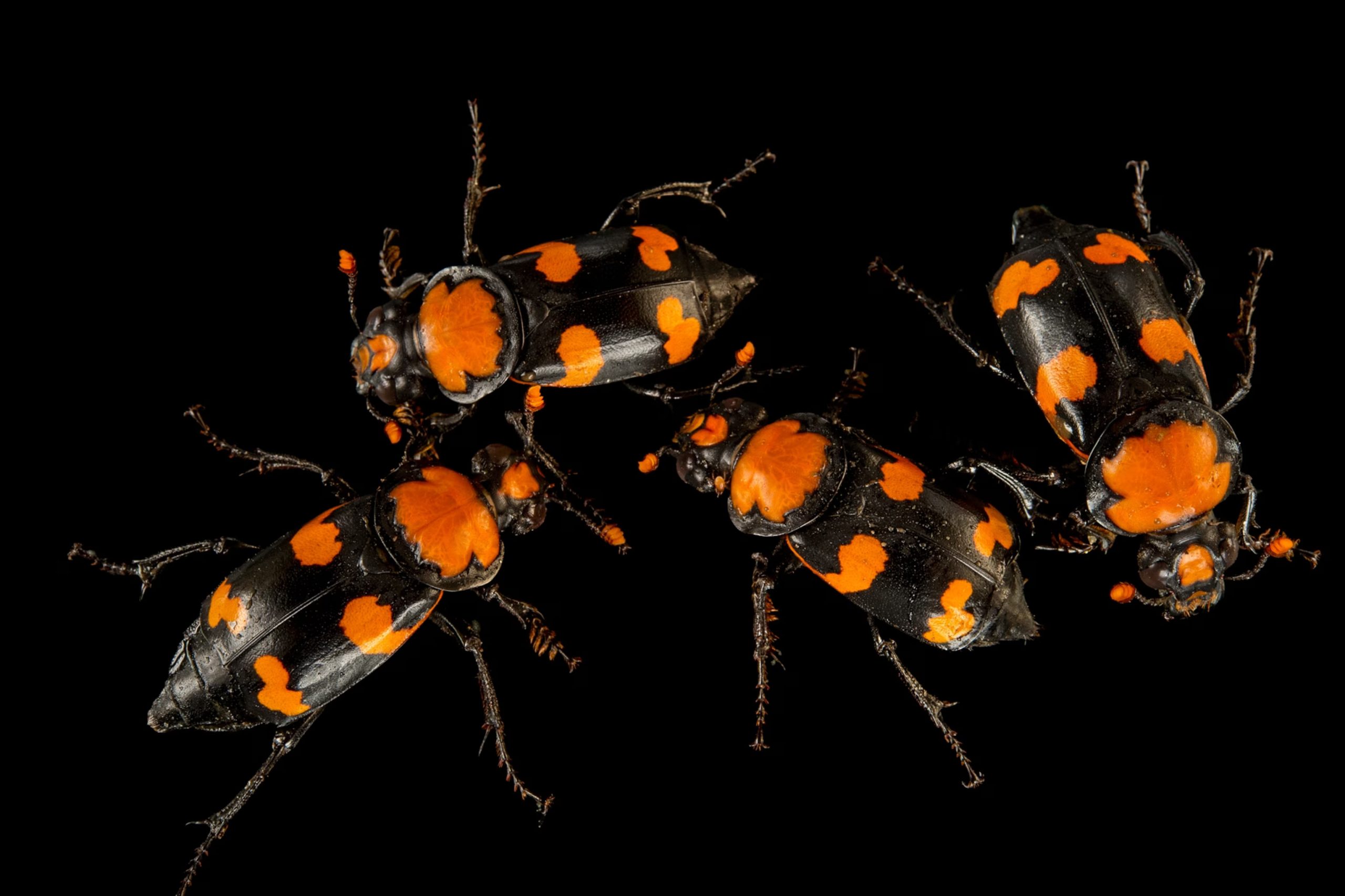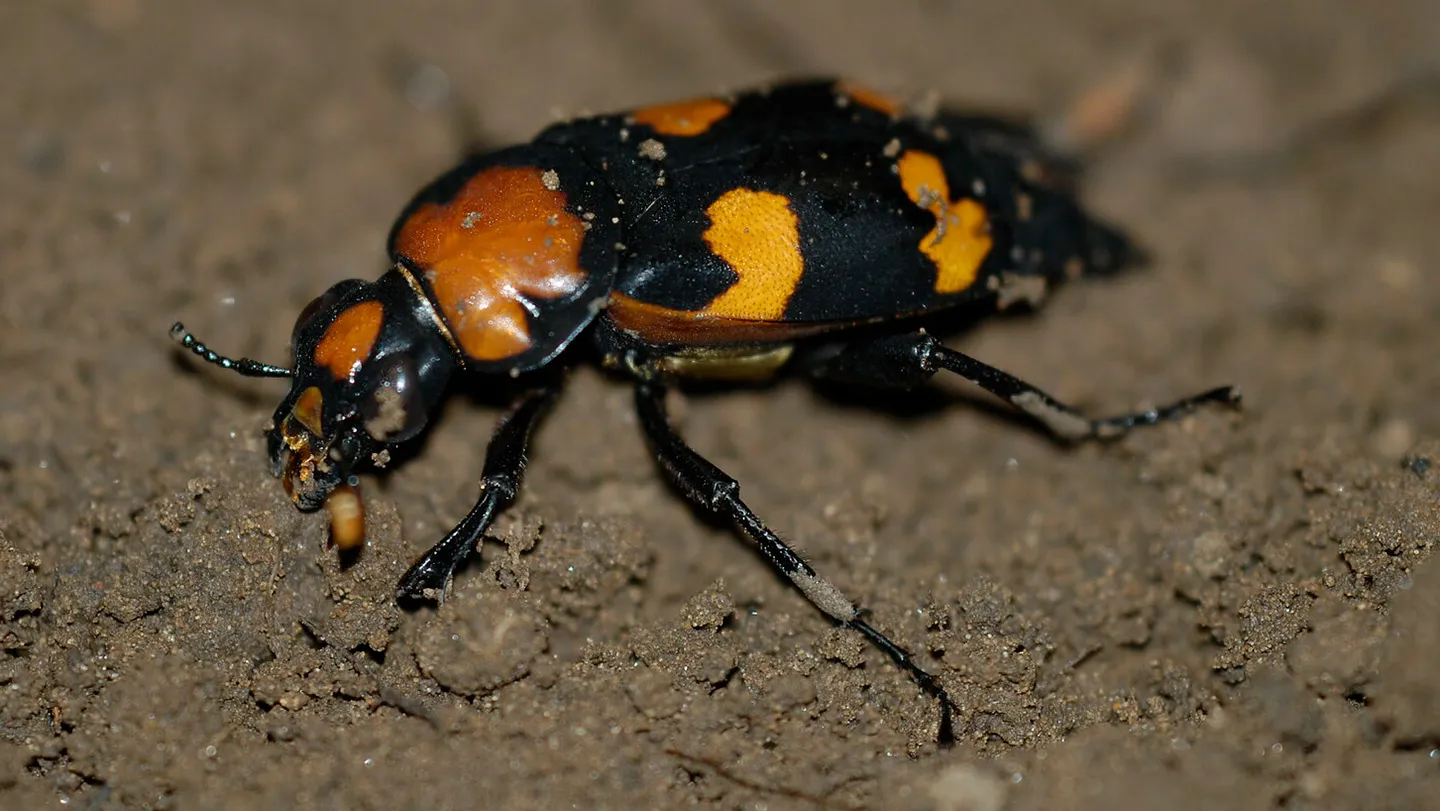The American burying beetle, a striking insect with red spots and orange-tipped antennae, is emerging as a surprising contender in the global fight against drug-resistant infections. Despite spending much of its life underground and rarely coming into contact with humans, this beetle may possess powerful antibacterial and antifungal properties.
Scientists have been intrigued for over two decades by its ability to preserve dead meat at room temperature, sparking interest in how these preservation mechanisms might be adapted for medical use. Now, a new discovery about its resilience to insecticides has further boosted its potential as a source for future antibiotic development.
Balancing Conservation and Discovery to Protect a Beetle with Life Saving Potential
This soil-dwelling beetle thrives in environments full of decay and death. To feed its offspring, the beetle seeks out small dead animals—often teeming with bacteria and fungi—and buries them underground. It strips away fur or feathers, rolls the carcass into a ball, and coats it with secretions that prevent decomposition.
This “brood ball” not only serves as a nursery but also as a food source for the beetle’s young. Its lifestyle, centered around decaying organisms, means constant exposure to pathogens—yet the beetle remains unaffected, pointing to an extraordinary immune resilience and microbial resistance.

While the beetle is naturally resilient to pathogens, it also seems to possess an unexpected resistance to one of the most commonly used insecticides in the United States—neonicotinoids. These chemicals, derived from nicotine, usually disrupt insect nervous systems and are lethal to many beneficial insects, including pollinators.
But unlike other beetles, American burying beetles exhibit temporary symptoms like twitching and hyperactivity after exposure but recover fully within a day. This rare resistance hints at powerful detoxification mechanisms that warrant deeper study.
Balancing Conservation and Discovery to Protect a Beetle with Life Saving Potential
Despite its impressive defenses, the American burying beetle remains vulnerable to environmental changes and pesticide exposure. Though it was downlisted from endangered to threatened in 2020 thanks to conservation efforts, its altered behavior post-insecticide exposure—like reduced feeding and increased predator risk—still threatens its survival. The new findings highlight the importance of limiting the beetle’s exposure to harmful chemicals to support its continued recovery and maintain its ecological role.
The beetle’s unusual ability to bounce back from deadly chemicals, combined with its antimicrobial secretions, reinforces scientists’ belief in its untapped biomedical potential. Longtime beetle researcher Wyatt Hoback believes these qualities could eventually lead to the development of new drugs that combat antibiotic resistance or aid in food preservation.
Continued research may reveal how the beetle’s detoxification and microbial resistance systems work—and how they could be adapted to help humans in the battle against evolving superbugs.


